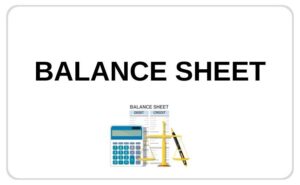![]()
Resource Allocation
Resource Allocation, The “Assets” segment within a balance sheet holds significant relevance for a contractual service provider, offering an instant view of the company’s financial well-being and its capacity for fulfillment.
This section outlines the resources owned by the company, which can directly impact its capacity to deliver services as agreed upon in contracts.
For a contractual service provider, there are several key points of relevance in the “”Assets”” section:
1. Current Assets:
These include items like cash, accounts receivable, and short-term investments. Cash and liquid assets are essential for meeting day-to-day operational expenses and ensuring timely service delivery. Accounts receivable represent funds owed by clients for services already provided, and their collection directly impacts cash flow.
2. Property, Plant, and Equipment (PPE):
PPE assets, such as equipment and facilities, might be crucial for delivering contracted services. For instance, a technology service provider might rely on specific servers and hardware to offer their services. The condition and value of these assets can affect the quality and efficiency of service delivery.
3. Intangible Assets:
These assets include patents, trademarks, copyrights, and goodwill. Depending on the nature of the service, these intangibles could be critical. For instance, a software development company might have valuable intellectual property that contributes to its competitive advantage and service offerings.
4. Prepaid Expenses:
Contractual service providers might prepay certain expenses like insurance, rent, or software licenses. These prepaid assets impact the company’s future financial obligations and should be considered when assessing its ability to meet contractual commitments.
5. Inventory:
If applicable, inventory could be relevant for providers offering physical products as part of their services. The availability of inventory can directly impact a company’s ability to fulfill orders and meet contractual terms.
6. Investments:
If the contractual service provider holds investments, such as stocks or bonds, these can impact its overall financial stability. Positive investment returns can bolster the company’s financial capacity, while losses might necessitate adjustments to its service operations.
In summary, the “”Assets”” section of the balance sheet offers insights into a contractual service provider’s financial resources, operational capabilities, and ability to meet its contractual commitments. Proper management and understanding of these assets are crucial for ensuring consistent and successful service delivery, maintaining client relationships, and supporting the overall growth and sustainability of the business.
FAQs:
To visit: https://www.mca.gov.in/

For further details access our website: https://vibrantfinserv.com
